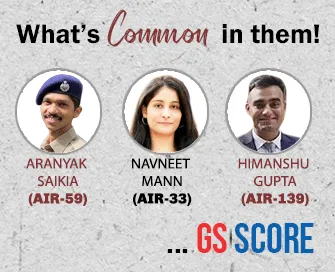

6th May 2025 (14 Topics)
Context
After Independence, India promised to reorganise states on linguistic lines. But the Marathi-speaking population was denied a unified state, even as states like Andhra were formed based on language. This led to a mass movement demanding a “Samyukta Maharashtra” (United Maharashtra) with Mumbai as its capital.
What Was the Samyukta Maharashtra Movement?
- The Samyukta Maharashtra Movement (1946–1960) was a mass movement demanding a separate state for Marathi-speaking people including regions like Mumbai, Vidarbha, Marathwada, Belgaum, Karwar, and Nippani.
- The core demand was for a unified state called ‘Samyukta Maharashtra’ with Mumbai (Bombay) as its capital, and it sought to bring together Marathi-speaking regions including Mumbai, Marathwada, Vidarbha, Belgaum, Karwar, and Nippani.
- It was not just a political demand, but also a cultural assertion of Marathi language, identity, and historical legacy, tracing back to the Maratha Empire under Shivaji.
- Importance of Mumbai to the Movement: Mumbai (then Bombay) was:
- Economically powerful, being India’s financial and industrial hub
- Culturally significant to Marathi people, despite also having large Gujarati, Parsi, and other communities
- Home to Maharashtrian working-class communities, mill workers, artists, and intellectuals
- However, Gujarati-speaking elites and business communities, with support from the Bombay Citizens Committee, wanted Bombay to remain a separate bilingual or centrally administered area.
- This led to intense conflict, as Marathi-speaking masses saw Mumbai as inseparable from Maharashtra, not only for emotional reasons but for practical and cultural ones as well.
- Formation of Maharashtra (1960): The Samyukta Maharashtra Movement finally achieved its goal when, on May 1, 1960, the state of Maharashtra was formed with Mumbai as its capital. Simultaneously, Gujarat was also carved out, satisfying the demands of both linguistic groups.
Key-Figures Involved:
- Annabhau Sathe: Lokshahir Annabhau Sathe played a crucial cultural role in mobilising the masses, especially the rural and working-class Marathi-speaking people. He was a folk artist, writer, and activist from a Dalit background.
- He was the founder of the Lal Bavta Kalapathak (Red Flag Cultural Troupe), which performed across villages to spread awareness of the movement
- His iconic song "Majhi Maina Gavavar Rahili" became an anthem of the movement, emotionally uniting people.
- Annabhau Sathe’s cultural activism helped bridge class, caste, and gender boundaries, giving the movement a broad-based and inclusive character.
- Dr. B. R. Ambedkar: Dr. Ambedkar, though not always acknowledged in mainstream narratives of this movement, was a pioneering voice for Samyukta Maharashtra:
- As early as 1948, his party, the Scheduled Caste Federation (SCF), introduced a resolution in the Bombay Municipal Corporation demanding a unified Marathi state.
- He submitted proposals to the Dhar Commission, which was set up to examine the viability of linguistic states.
- In his writings such as "States and Minorities" and "Thoughts on Linguistic States", he argued that linguistic states could empower marginalized communities and enhance administrative efficiency.
- Resistance and Setbacks Despite popular support, the movement faced:
- Opposition from Gujarati elites, business interests, and central leaders
- Resistance from RSS leaders like M.S. Golwalkar
- Suppression by police, leading to the death of over 100 protesters
- Indifference from national leaders, until pressure from electoral defeats and public protests forced a change in approach
- In fact, it was only after continued unrest and the resignation of Union Finance Minister D. Deshmukh in protest that Nehru began to seriously reconsider.
More Articles

